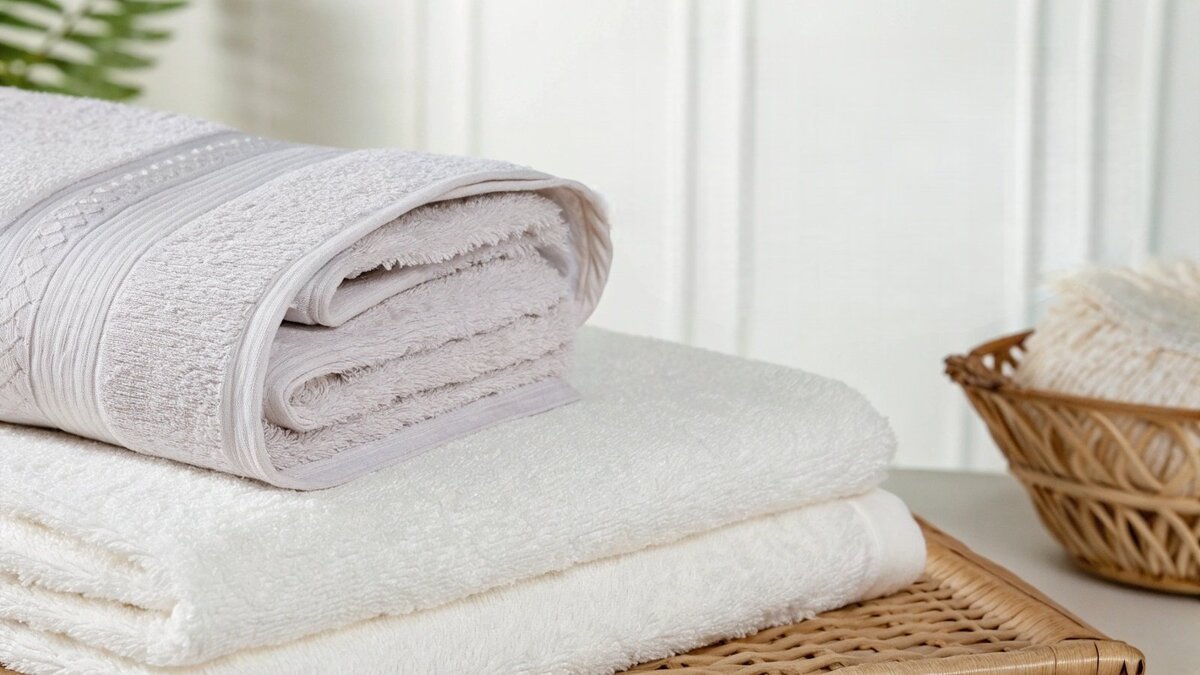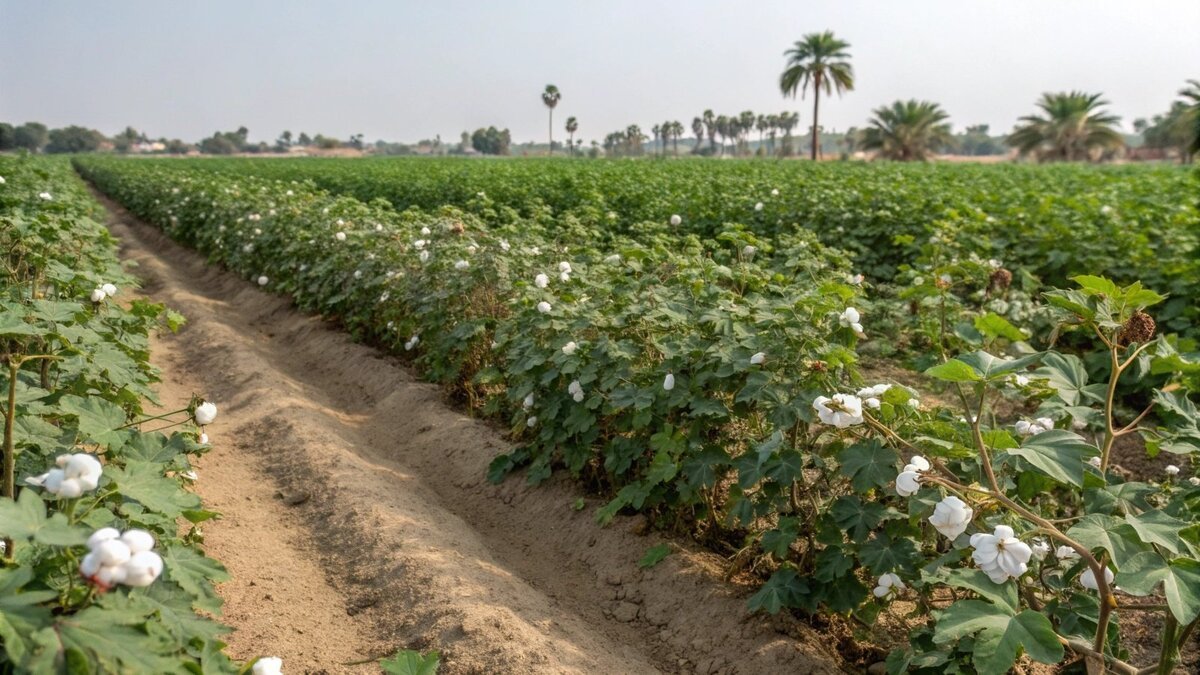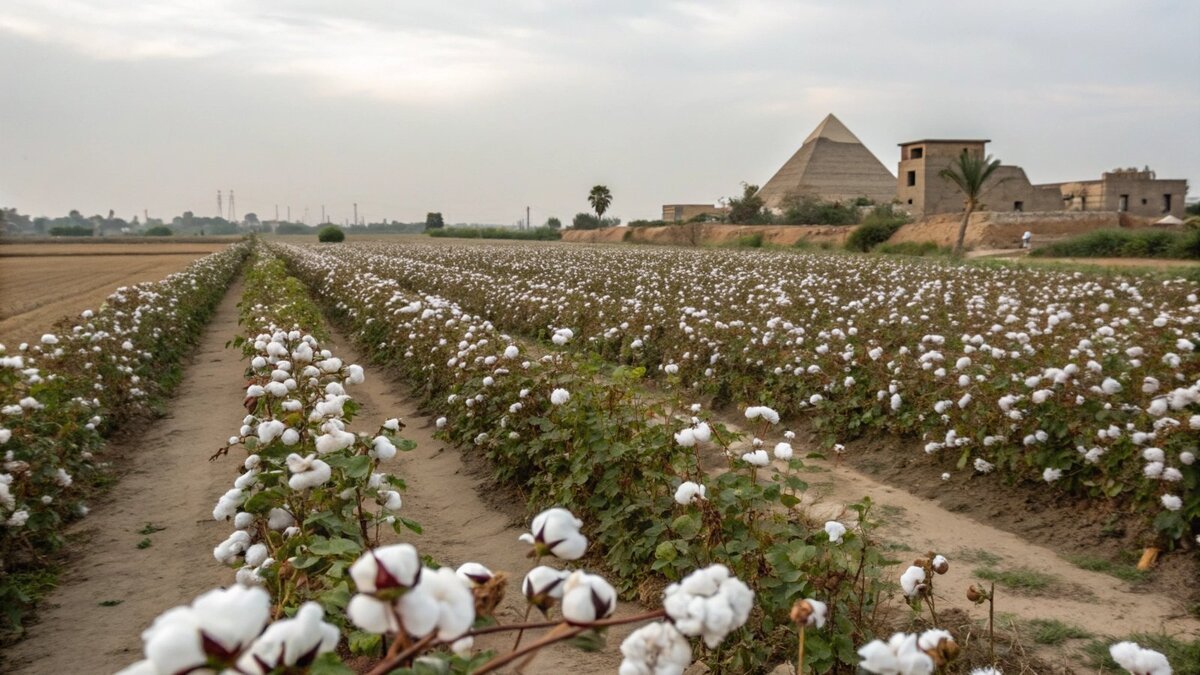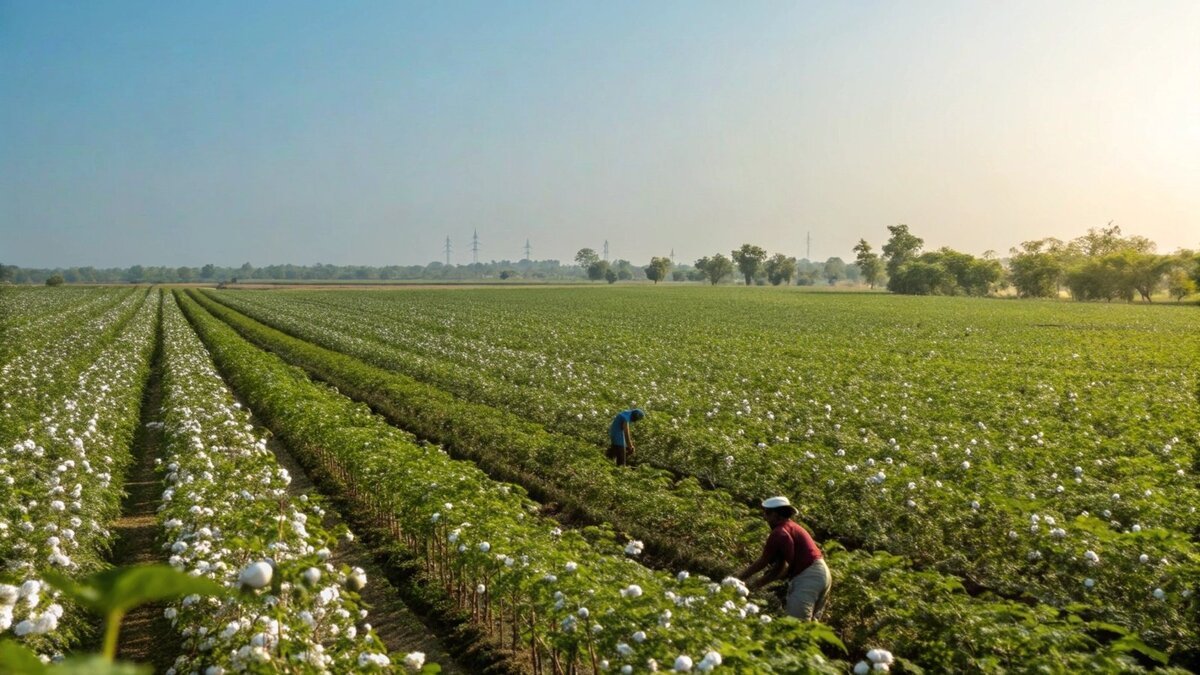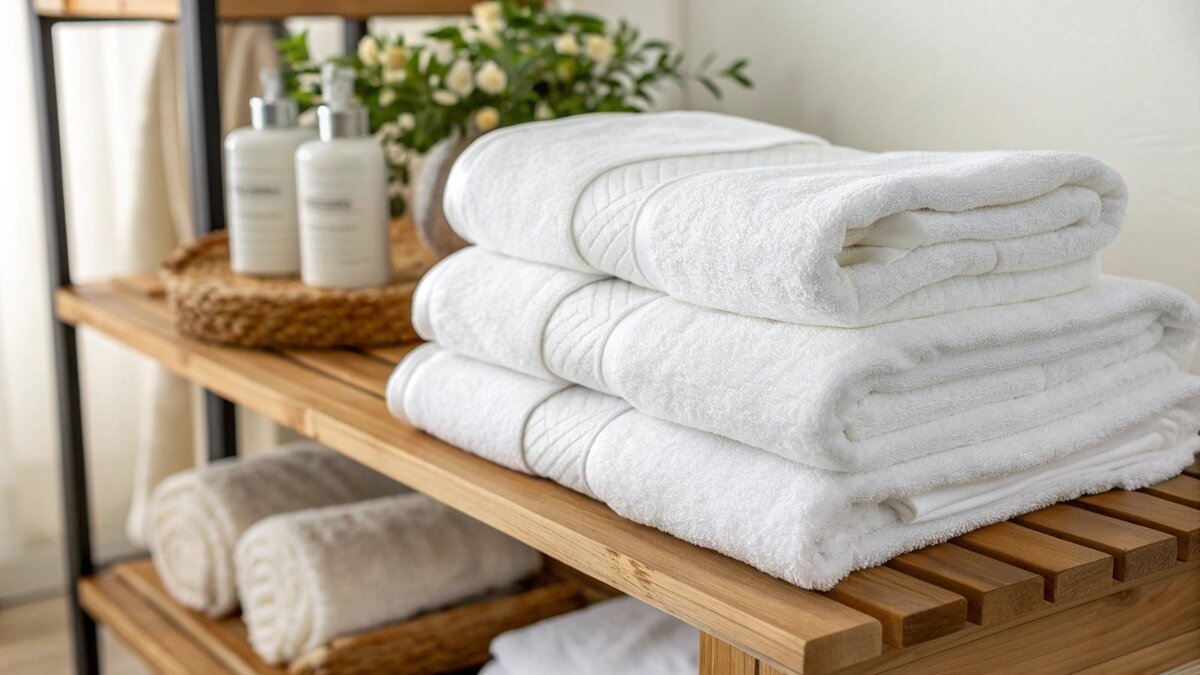You hear "Egyptian cotton" and think luxury. But sourcing it is confusing, leading to costly mistakes. I’ll demystify it so you can choose the best cotton for your brand.
Egyptian cotton’s reputation comes from its Extra-Long Staple (ELS) fibers, which create stronger, softer, and more absorbent yarns. While production has fluctuated, genuine Giza cotton from Egypt remains a benchmark for luxury textiles, especially for high-end towels and bedding that demand superior quality and durability.
I’ve been in the textile industry for over 15 years, and the term "Egyptian cotton" comes up in almost every conversation about premium quality. Clients want the prestige, but they often don’t know the full story behind the label. It’s more than just a name; it’s a specific combination of geography, history, and botany that creates a truly exceptional fiber. But with so many products falsely claiming the label, you need to understand the source to ensure you’re getting the real deal. Let’s peel back the layers and look at what makes this cotton so famous, how much is actually produced, and how it compares to other options on the market. This knowledge is your best tool for making confident, profitable decisions for your towel brand.
Why is Egypt known for cotton?
Everyone knows Egypt is famous for cotton, but do you know why? Without this knowledge, you can’t spot true quality. Let’s dive into the history and geography.
Egypt is known for its cotton because the Nile River Delta provides the perfect climate and fertile soil to grow Extra-Long Staple (ELS) cotton. This unique environment results in fibers that are longer, stronger, and finer, creating exceptionally soft and durable fabrics that established its global reputation.
The reputation of Egyptian cotton is directly tied to its unique growing environment. It’s not something you can easily replicate elsewhere. As a manufacturer, I’ve seen firsthand how the raw material’s origin impacts the final product, and Egypt’s advantage is clear.
The Nile’s Gift
The magic happens in the Nile River Delta. This region offers a perfect trifecta of conditions: rich, nutrient-dense soil replenished by the river; high humidity levels; and consistent sunshine without extreme heat. These factors allow the cotton plants, specifically the Gossypium barbadense species, to develop their signature Extra-Long Staple fibers. When I talk to our suppliers, they emphasize how this specific microclimate is nearly impossible to find anywhere else on Earth. It’s the reason why Giza cotton, named after the region, is the gold standard.
A History of Quality
Egypt’s cotton story began in the 19th century when it was developed as a high-value export. The world quickly recognized its superior quality, and it became synonymous with luxury textiles. This long history built a powerful brand that persists today.
| Feature | How It Contributes to Quality |
|---|---|
| Nile Delta Soil | Provides rich nutrients for healthy plant growth and strong fibers. |
| High Humidity | Prevents fibers from becoming brittle, allowing them to grow longer. |
| Consistent Sun | Fuels photosynthesis for optimal plant development without scorching. |
How much cotton does Egypt produce?
You might think Egypt is a cotton giant. The reality is quite different and affects its price and availability. Let’s look at the actual production numbers.
Egypt produces a relatively small amount of the world’s total cotton, focusing on high-value, Extra-Long Staple (ELS) varieties. Its annual production is often less than 1% of the global supply, making genuine Egyptian cotton a rare and premium commodity compared to more common cotton types.
This is one of the biggest misconceptions I clear up for clients. They assume that because the name is everywhere, the supply must be vast. The opposite is true. Egypt has made a strategic choice to focus on quality, not quantity.
Production in Perspective
Globally, over 25 million metric tons of cotton are produced each year. Egypt’s contribution to this total is tiny, often amounting to just a few hundred thousand bales. This is because the land suitable for growing the finest Giza varieties is limited, and the farming process is more labor-intensive. In contrast, countries producing Upland cotton (the most common type) use vast, industrialized farms to maximize yield. This scarcity is the primary driver of Egyptian cotton’s high price. When a client asks for a quotation on 100% Egyptian cotton towels, the price reflects this rarity.
Impact on Your Business
For a brand manager or buyer, this scarcity has real-world implications. It means longer lead times if there’s a bad harvest and less price negotiation flexibility. A few years ago, a poor harvest in Egypt caused a sudden price spike. We had to work closely with our clients to manage their expectations and, in some cases, pivot to American Pima cotton—another excellent ELS option—to keep their production on schedule.
| Country | Annual Production (Approx. Bales) | Primary Focus |
|---|---|---|
| India | 25-30 Million | Quantity (Mainly Upland) |
| China | 25-30 Million | Quantity (Mainly Upland) |
| USA | 15-20 Million | Quantity and Quality (Upland & ELS Pima) |
| Egypt | < 1 Million | Quality (Exclusively ELS) |
Which country is the largest producer of cotton?
Egypt isn’t the biggest cotton producer, so who is? Focusing only on Egypt means you might miss out on other high-quality, cost-effective options for your products.
India is currently the world’s largest producer of cotton, followed closely by China and the United States. These countries produce massive quantities of various cotton types, including Upland cotton, which accounts for the vast majority of global supply and is used in everyday textiles like standard towels.
Understanding the global cotton landscape is crucial for smart sourcing. While Egypt holds the crown for a specific luxury niche, the engine of the global textile industry is powered by other giants. At TowelTrend, we source different types of cotton based on a client’s specific goals for their product line.
The Global Cotton Leaders
India and China are the powerhouses of cotton production. Together, they account for roughly half of the world’s supply. The United States is another major player, known not only for its large volume of Upland cotton but also for its high-quality ELS cotton, branded as Supima®. Brazil and Pakistan also contribute significantly to the global market. The vast majority of this production is standard Upland cotton, the workhorse fiber used for everything from denim jeans to basic T-shirts and everyday towels.
Choosing the Right Cotton for Towels
For a towel brand, deciding on cotton isn’t a one-size-fits-all choice. It’s a balance of performance, price, and branding.
- Egyptian Cotton: Best for ultra-luxury hotel or spa lines where softness and durability are paramount.
- Supima® (American Pima): An excellent ELS alternative, offering similar a ELS premium feel with more consistent supply.
- Turkish Cotton: A great Long-Staple option known for its softness and quick-drying properties, ideal for bath towels.
- High-Quality Upland Cotton: Perfect for high-volume, cost-effective towels for retail or promotional use where durability is still important.
I always advise clients: don’t just chase a name. Let’s define your target customer and price point first, then select the perfect fiber to match.
Why is Egyptian cotton so special?
We all know Egyptian cotton is special, but what makes it better? If you can’t explain it, you can’t sell it. Let’s break down the science.
Egyptian cotton is special due to its Extra-Long Staple (ELS) fibers. These long, thin fibers can be spun into very fine, strong, and smooth yarns. This results in fabrics that are incredibly soft, highly absorbent, more durable, and less prone to pilling than standard cotton.
The "special" quality of Egyptian cotton comes down to a single physical characteristic: staple length. It’s a simple concept that has a huge impact on the final fabric. As someone who handles finished towels every day, I can feel the difference immediately.
The Science of the Staple
"Staple" is just the industry term for a single cotton fiber. Most of the world’s cotton is "Upland" cotton, which has short staples (around 1 inch). Genuine Egyptian cotton is an Extra-Long Staple (ELS) cotton, with fibers over 1.4 inches long. This extra length is everything. When spinning yarn, longer fibers can be twisted together with fewer connection points. Imagine twisting two short pieces of string together versus two long ones—the long ones create a much stronger and smoother cord. It’s the same principle with cotton. This creates a yarn that is both exceptionally strong and incredibly fine.
What This Means for Your Towels
This superior yarn translates directly into a better towel. I once had a client who was launching a luxury hotel supply brand. They were hesitant about the higher cost of ELS cotton towels. We produced a small test run for them. After just a few months of industrial washing, their old Upland cotton towels were pilling and felt rough. Our ELS towels were actually softer. They were sold.
| Quality | Short-Staple (Upland) | Extra-Long Staple (Egyptian) |
|---|---|---|
| Softness | More fiber ends stick out, creating a coarser feel. | Fewer fiber ends result in a silky, smooth surface. |
| Strength | Weaker yarn due to more splices, breaks down faster. | Stronger, more resilient yarn that withstands washing. |
| Absorbency | Thicker yarns mean fewer loops, resulting in less surface area. | Finer yarns allow for a denser weave with more loops, increasing absorbency. |
| Pilling | Pills easily as short fibers break and tangle. | Highly resistant to pilling, maintaining a new look for longer. |
Conclusion
Genuine Egyptian cotton is a rare, premium fiber perfect for luxury goods. Understanding its production and unique qualities helps you make the best sourcing decision for your brand’s specific needs.

